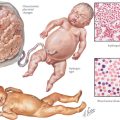Chapter 52 Sexually Transmitted Infections: Human Papillomavirus
INTRODUCTION
ETIOLOGY AND PATHOGENESIS
CLINICAL CHARACTERISTICS
Signs and Symptoms
DIAGNOSTIC APPROACH
Workup and Evaluation
MANAGEMENT AND THERAPY
Nonpharmacologic
Drug(s) of Choice
| Disease | HPV Strain |
|---|---|
| Anogenital warts | 6 and 11(90% of cases), 42, 43, 44, 55, and others |
| Cervical cancer, vulvar squamous cancer | 16 and 18 (70% of cases), 31, 33, 35, 39, 45, 51 |
| Common warts | 2, 7 |
| Epidermodysplasia verruciformis | More than 15 strains |
| Flat cutaneous warts | 3, 10 |
| Focal epithelial hyperplasia | 12, 32 |
| Oral papillomas | 6, 7, 11, 16, 32 |
| Oropharyngeal squamous cell carcinoma | 16 and others |
| Plantar warts | 1, 2, 4 |
| Respiratory papillomatosis | 6 and 11 |
FOLLOW-UP
MISCELLANEOUS
Koutsky LA, Ault KA, Wheeler CM, et al. A controlled trial of a human papillomavirus type 16 vaccine. New Engl J Med. 2002;347:1645.
Dunne EF. Prevalence of HPV infection among females in the United States. JAMA. 2007;297:813.
Munoz N, Bosch FX, de Sanjosé S, et al. Epidemiologic classification of human papillomavirus types associated with cervical cancer. New Engl J Med. 2003;348:518.
Srodon M, Stoler MH, Baber GB, Kurman RJ. The distribution of low and high-risk HPV types in vulvar and vaginal intraepithelial neoplasia (VIN and VaIN). Am J Surg Pathol. 2006;30:1513.
Villa LL, Costa RL, Petta CA, et al: High sustained efficacy of a prophylactic quadrivalent human papillomavirus types 6/11/16/18 L1 virus-like particle vaccine through 5 years of follow-up. Br J Cancer 20064;95:1459. Epub 2006 Nov 21.
Winer RL, Hughes JP, Feng Q, et al. Condom use and the risk of genital human papillomavirus infection in young women. N Engl J Med. 2006;354:2645.
Zuna RE, Allen RA, Moore WE, et al. Distribution of HPV genotypes in 282 women with cervical lesions: evidence for three categories of intraepithelial lesions based on morphology and HPV type. Mod Pathol. 2007;20:167. Epub 2006 Dec 22
American College of Obstetricians and Gynecologists. Sexually transmitted diseases in adolescents. ACOG Committee Opinion 301. Washington, DC: ACOG, 2004.
American College of Obstetricians and Gynecologists. Human papillomavirus. ACOG Practice Bulletin 61. Washington, DC: ACOG, 2005.
American College of Obstetricians and Gynecologists. Human papillomavirus vaccination. ACOG Committee Opinion 344. Washington, DC: ACOG, 2006.
Clifford GM, Goncalves MA, Franceschi S, HPV and HIV Study Group. Human papillomavirus types among women infected with HIV: a meta-analysis. AIDS. 2006;20:2337.
Cox JT Epidemiology and natural history of HPV J Fam Pract Suppl 2006 3
Dunne EF, Markowitz LE: Genital human papillomavirus infection. Clin Infect Dis 20061;43:624. Epub 2006 Jul 26.
Eckert LO, Lentz GM. Infections of the lower genital tract. In: Katz VL, Lentz GM, Lobo RA, Gershenson DM, editors. Comprehensive Gynecology. 5th ed. Philadelphia: Mosby/Elsevier; 2007:576.
Lowy DR, Schiller JT. Prophylactic human papillomavirus vaccines. J Clin Invest. 2006;116:1167.
Markowitz LE, Dunne EF, Saraiya M, et al Quadrivalent human papillomavirus vaccine MMWR 56 2007 1 Available at: http://www.cdc.gov/mmwr/preview/mmwrhtml/rr5602a1.htm Accessed May 13, 2007.
Scheurer ME, Tortolero-Luna G, Adler-Storthz K. Human papillomavirus infection: biology, epidemiology, and prevention. Int J Gynecol Cancer. 2005;15:727.
Trottier H, Franco EL. The epidemiology of genital human papillomavirus infection. Vaccine. 2006;24:S1.
Walboomers JM, Jacobs MV, Manos MM, et al. Human papillomavirus is a necessary cause of invasive cervical cancer worldwide. J Pathol. 1999;189:12.
Weaver BA. Epidemiology and natural history of genital human papillomavirus infection. J Am Osteopath Assoc. 2006;106:S2.
Wiley D, Masongsong E. Human papillomavirus: the burden of infection. Obstet Gynecol Surv. 2006;61:S3.








